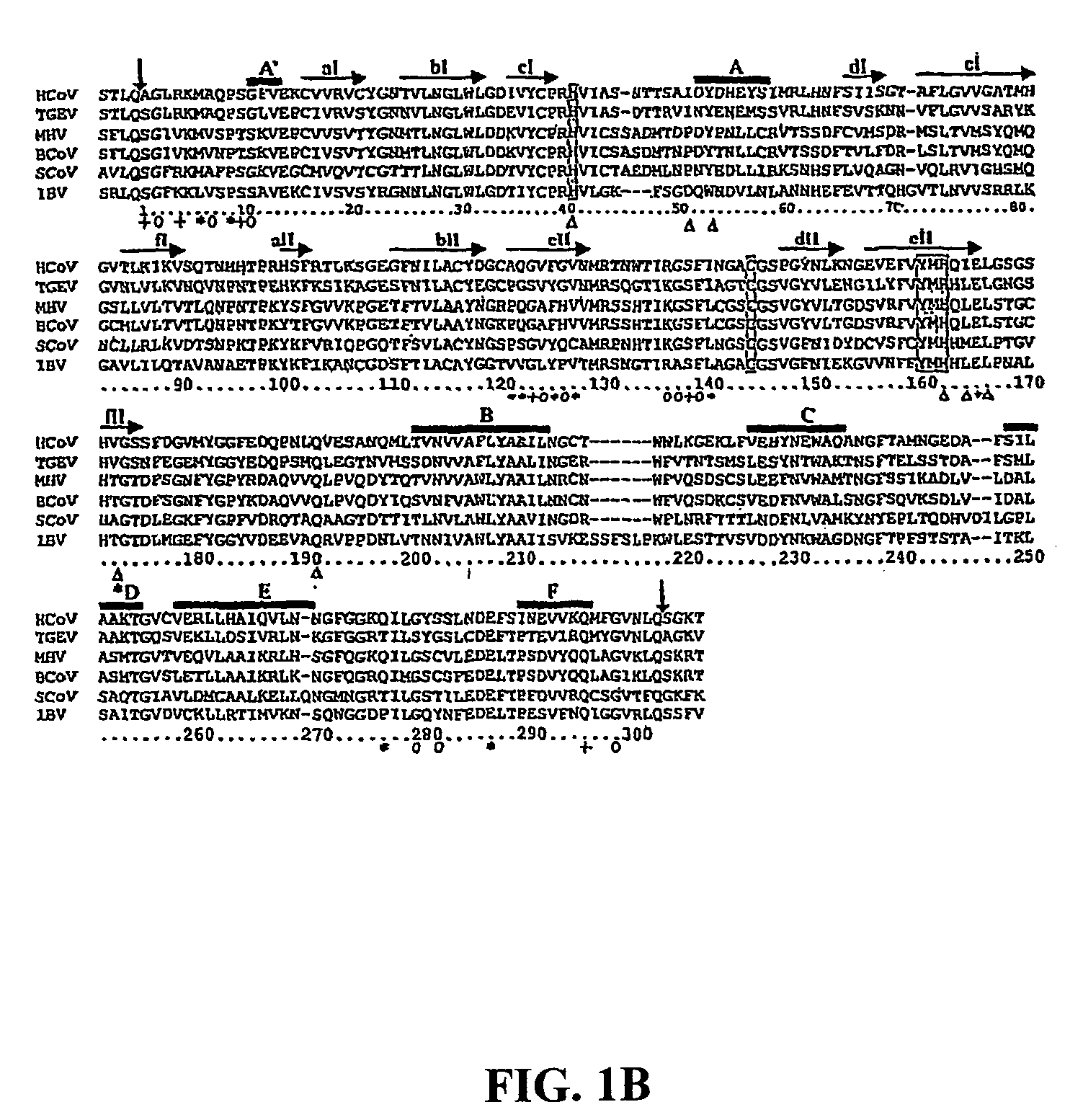Crystal structure of human coronavirus 229E main proteinase and uses for developing SARS inhibitors
a proteinase and proteinase technology, applied in the field of crystal structure of human coronavirus 229e main proteinase, can solve the problems of inability to fully exclude airborne transmission and lack of efficacious therapy
- Summary
- Abstract
- Description
- Claims
- Application Information
AI Technical Summary
Benefits of technology
Problems solved by technology
Method used
Image
Examples
examples
Materials and Methods
Protein Expression and Purification:
[0073]Recombinant HCoV 229E MproΔ(301-302) (residues 1 to 300; COOH-terminal residues 301 and 302 deleted) was expressed and purified essentially as described previously for the FIPV and full-length HCoV main proteinases. Briefly, fusion proteins in which the HCoV pp1a / pp1ab amino acids 2966 to 3265 had been fused to the E. coli maltose-binding protein (MBP), were expressed in E. coli TB1 cells (New England Biolabs). The fusion protein MBP-HCoV-MproΔ(301-302) was purified by amylose affinity chromatography and cleaved with factor Xa to release HCoV MproΔ(301-302). Subsequently, the recombinant proteinase was purified to homogeneity using phenyl Sepharose HP (Amersham Biosciences), Uno-Q (Bio-Rad Laboratories), and Superdex 75 (Amersham Biosciences) columns and concentrated to ≧15 mg / ml (Centricon-YM3, Millipore). SARS-CoV MproΔ(305-306), which also had its two COOH-terminal residues deleted, was produced in an analogous way. A...
PUM
| Property | Measurement | Unit |
|---|---|---|
| volumes | aaaaa | aaaaa |
| pH | aaaaa | aaaaa |
| three-dimensional structures | aaaaa | aaaaa |
Abstract
Description
Claims
Application Information
 Login to View More
Login to View More - R&D
- Intellectual Property
- Life Sciences
- Materials
- Tech Scout
- Unparalleled Data Quality
- Higher Quality Content
- 60% Fewer Hallucinations
Browse by: Latest US Patents, China's latest patents, Technical Efficacy Thesaurus, Application Domain, Technology Topic, Popular Technical Reports.
© 2025 PatSnap. All rights reserved.Legal|Privacy policy|Modern Slavery Act Transparency Statement|Sitemap|About US| Contact US: help@patsnap.com



